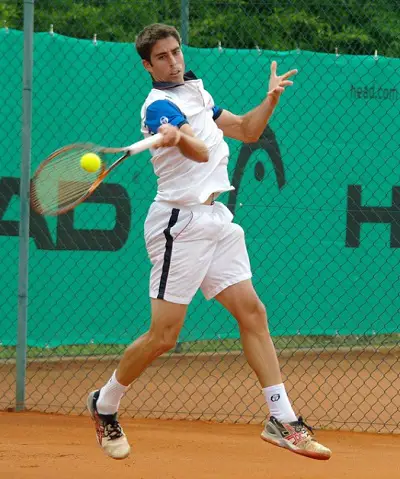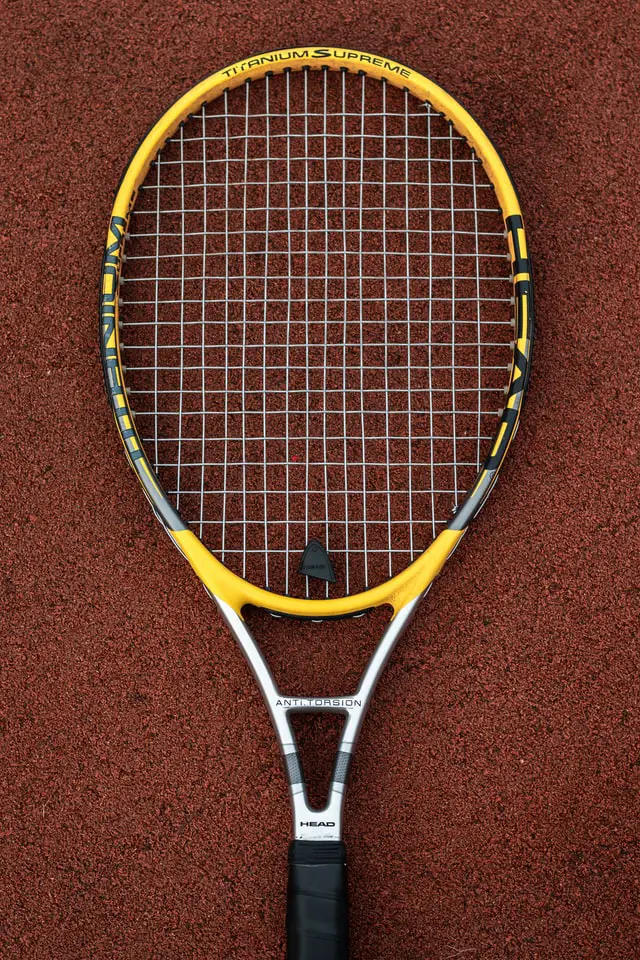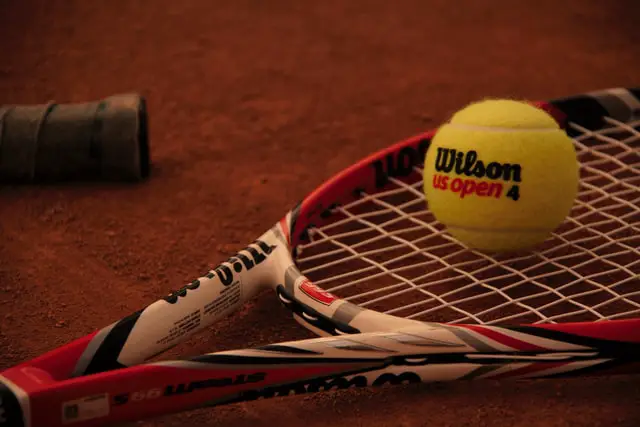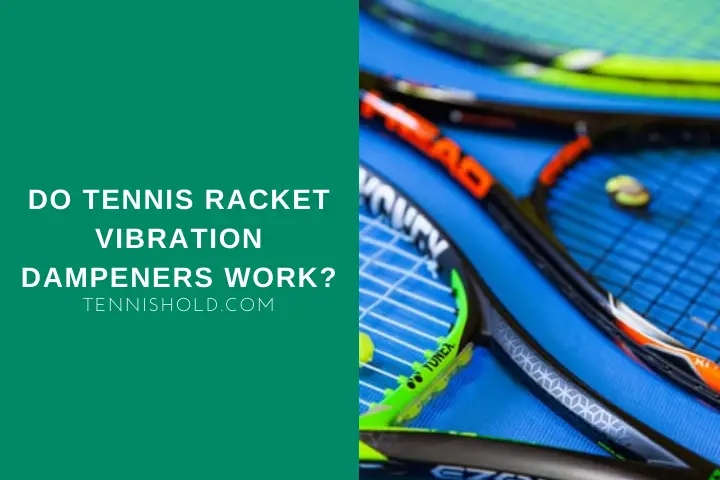Vibration dampeners showed up on tennis rackets years ago. Ever since, they promoted more misconceptions than practical purposes.
Their real benefits are rather psychological than psychical. If you played without this little rubber on your strings, you know how awkward each stroke sounds.
Most players hate it, and me too!
Tennis racket vibration dampeners don’t prevent transferring the load from the racket frame to your arm. Players feel more comfortable playing with them because they dull the unpleasant sound and string vibrations on the hit.
People believed that using them would reduce the number of injuries, like tennis elbow or wrist tendonitis. This isn’t possible because the dampener’s size and weight are too small to handle the racket’s shocks.
Similarly, it doesn’t increase racket power either, which depends on racket stiffness and string tension.
Anyway, vibration dampeners became now part of the game and will never disappear so let’s take a deeper insight.
What Is The Purpose Of Tennis Shock Absorber?

The reason why tennis players use shock absorbers is to reduce string vibration. They can affect their efficiency and make them lose.
Every time the ball hits the racket, it moves the strings around and creates specific noise. This characteristic ping sound doesn’t affect technique or strokes. It can influence psychologically, though.
Vibration dampeners cut this effect down.
This is quite important for beginner players too. Without additional distractors like this, their learning is faster, more fun, and entertaining.
If you can hold the racket freely and direct the balls wherever you want, why struggle with vibrations?
In the end, though, most players use dampeners just not to get annoyed with the sounds. It seems to be more like a psychological matter, which actually has a powerful impact on performance.
All in all, the only purpose of tennis shock absorbers is to reduce string vibrations which cause varied distractions.
How Does Vibration Dampener Work?

Vibration dampeners are tiny gadgets with yet simple working principle.
A dampener is a piece of rubber formed in different shapes and sizes and placed between strings. The rubber properties allow it to easily absorb lots of repetitive shocks.
When the racket hits the ball, high amplitude vibrations show up on the racket head. Vibrations spread from the head towards and through the dampener. This is where they disappear in an eyeblink.
Vibration absorbers act like string-bed mode shifters. Their task is to reduce the frequency so it doesn’t make any ping sound.
Imagine a weighted bar dropped in a gym. If you drop it on the floor, it will bounce back high, but if you drop it on a rubber fitness mat… This is exactly how it works.
In tennis, almost every single detail can change the result. And vibration dampeners aren’t an exemption.
According to international rules, you can place as many dampeners as you wish anywhere outside the cross-strings pattern.
From experience, placing more than one is pointless since the noise is already reduced.
Do Professional Tennis Players Use Dampeners?

Professional tennis players, like most amateurs, use dampeners no matter if it is a practice or a tournament. If you tried to change this habit or play without it, it would feel bad and uncomfortable.
If you compare TOP 100 professional players, you will notice that women tend to pay more attention to it.
The secret probably lies in temperament, and more emotional behavior on the court, related to men, which could increase by dealing with odd sounds.
In professional competition above 70% of women get rid of vibrations on their strings while nearly 60% of guys decide to do that.
Roger Federer, Andy Murray, and Serena Williams don’t need to upgrade their rackets this way and are always very successful.
Meanwhile, Novak Djokovic, Rafael Nadal, Naomi Osaka, and Simona Halep play their best, using dampeners.
As you see, it doesn’t matter at what level you are when it comes to choosing to play with or without a shock absorber.
Dampener isn’t the key to being a champion.
Should I Use A Vibration Dampener?

Whether you should use a vibration dampener or not is an individual decision. Your choice will mainly depend on your range of comfort zone with sounds and racket feel.
The best way to learn it is simply to try with and without a shock absorber during practice. Find in which situation your performance is better and you are more confident. Your own game will give you the answer.
Using a vibration dampener helps to keep the ping sound away. Even many professional players can’t stand it any way and get nervous.
If you told them to play without a dampener, you’d be surprised how they underperform. So if you are very sensitive to external distractions, too, you should definitely use them.
Perhaps the best way to decide which of them is suitable for you is to test them one by one.
Stiffness, shape, weight distribution, or condition may differ. You can’t be sure if it matches your racket frame, string tension, or even your own play style.
The most common dampener (Amazon) types are ‘button’ and ‘warm,’ or simple rubber bands.
The first one is smaller, round, and looks much like your shirt buttons. It could be an advantage for those who often contact the ball far from the racket face center.
The other one might give a more solid effect in reducing string-bed vibration because it spans wider. Its shape is elongated, which makes it a little more challenging to install on strings.
Remember that these tiny shock absorbers won’t prevent you from injuries. Your wrist and elbow are exposed to similar loads with and without dampener on your racket.
But it doesn’t mean that playing tennis is dangerous on its own. The injuries come from improper technique, wrongly-selected equipment, and overtraining.
Modern tennis rackets such as Babolat also bring absorption systems built-in in their own structure.
Final Words
Next time you go to play tennis don’t forget to take your dampener with you. Trust me, if you always use it and suddenly lose it, you won’t end as a winner in this match.
It’s more or less like breaking the strings and continuing without exchanging it for a newly strung racket.
But if you have never used a shock absorber before, you should definitely try it!
It can make a difference and really help your tennis evolve. There is a lot to gain, especially in connection with emotional control and ball feel.
Every single detail counts in perfect tennis strokes. It starts with fundamentals like proper technique and a professional racket. But there are such small items like vibration dampeners too.
They make a significant addition to professional tennis equipment.
Is your experience with dampeners and dealing with sounds similar?
Would you resign from a dampener if racket producers eliminated weird sounds on impact?

